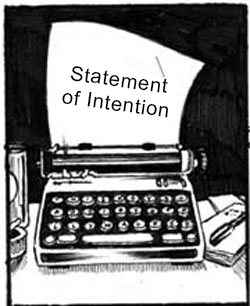As you move ahead to execute your chapter 7 goals, one of the forms you need to file is Individual Debtor’s Statement of Intention (Official Bankruptcy Form 8). By filling out this form you communicate the court, the trustee and creditors how you think to handle your secured debts: those debt that are secured against collateral.
Statement of Intention form
The latest copy of the Individual Debtor’s Statement of Intention form can be found on the U.S. Court’s website at www.uscourts.gov.
When to file the Statement of Intention
You can file the Statement of Intention along with rest of your bankruptcy papers, though it’s not mandatory. However, the closing date is within 30 days of filing your bankruptcy petition by the date set for the meeting of creditors (the one that occurs first).
Failing to file the Statement of Intention on time may result in termination of the automatic stay.
Secured debts in bankruptcy
You are no longer accountable for your secured debts once you file bankruptcy. This means that the creditor can no longer sue you for what you owe. However, this doesn’t mean that you can retain the property that secured the debt and the creditor is still authorized to get hold of the property. In the Statement of Intention form, you need to therefore make clear if you plan to surrender the property, buy it from the creditor, or chase other alternatives for retaining it.
Available alternatives
While you file the Statement of Intention form, you have to list all your secured debts, names of the creditors and moreover, what you plan to do next. There are many alternatives for dealing with secured debts:
Surrender the property: This simplest and the most hassle free alternative is to hand over the property to the creditor. If you have no appeal for the property, give it back and mend everything.
Redeem the property: If you wish to redeem the property, you have to buy it back from the creditor. Just pay the creditor what you still owe or the substitution cost of the property, which is less.
Reaffirm the debt: By reaffirming a debt you agree to remain legally obligated for the debt and repay it once the bankruptcy case is over. However, here you have to enter into a reaffirmation agreement with the creditor and remain present in a hearing where the judge chooses if the agreement is in your best interests.
Retain the property: Some creditors may allow you to keep the property without reaffirming or redeeming as long as you are current on your payments. However, the creditor still is in full authority to repossess at any time.









